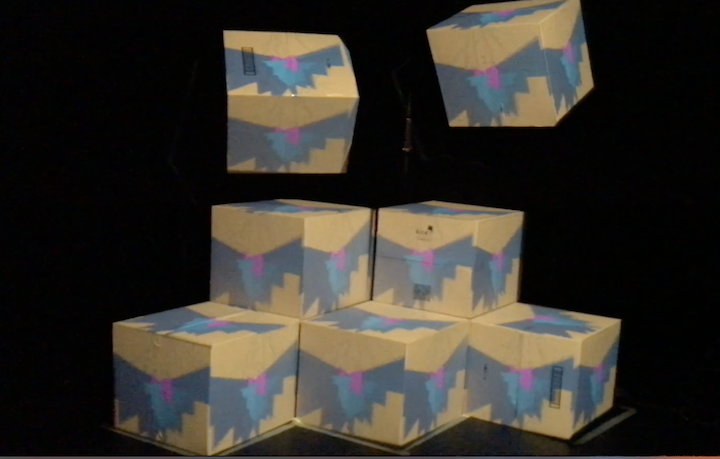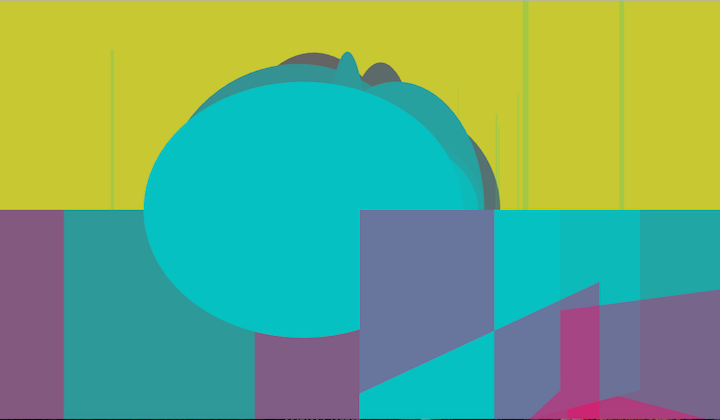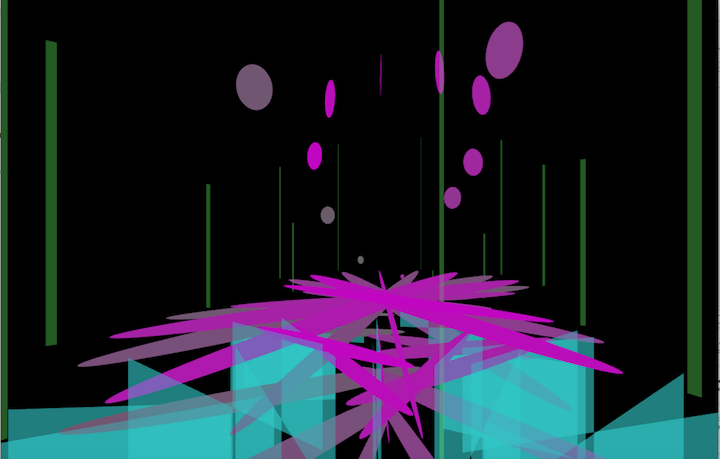MoonDance
This work was inspired by the idea of systems moving continually, transforming itself, changing in terms of colour, shape and movement.
produced by: Gaytri Geeta Roopnarine
Introduction
From the idea of the pulsing beat of the universe, I began to think in terms of moons dancing around a planet and that then led on to the idea of complex systems interacting in intricate ways but always having an underlying order, a basic repetition that drives the system but at the same time allowing for transformation.
Concept and background research
Projection mapping has the ability to take an object and transform it in a way that add new dimensions to the object and the projected work. The interaction between the object and projected images creates a moving sculpture which at times is subversive, intangible and unreal as the eyes move between the object and the projected design.
I wanted to work with shapes and colours which were organically influenced. It was going to be a work was going to be without sound, and I felt that movement, colour and shape needed to interact in a way that was visually interesting and also create the notion of sound. In the beginning, my inspiration came from the code itself, from the use of the sine function to create shape and movement that was harmonic and which seemed to have a life and beat of their own. This inspired the idea of nature and the sounds that go on the background of the universe, the pulsing beat of the universe. (Cosmic noise and galactic radio noise is random noise that originates outside the Earth’s atmosphere. Wikipedia)
Technical
I began to work with ovoid shapes but first I had to determine what was a viable number of shapes that would give an interesting design. 100 shapes led to chaotic behaviour and anything under 20 shapes were sparse. 30 shapes give the most variety and interest. I also used the sine wave to go through two circles ie 720 degrees instead of 360 as it added a layer of complexity to the design.
Each function or scene became another instance of the same class. I felt by working with one template and trying to stretch the design in different ways might give a cohesiveness to the final artwork. Using shapes that differed to each other such as rectangle, line, and round and elongated ovoids gave me a comprehensive range to work with. I experimented with different colours in order to create subtle difference between the colours by using the ‘lerp’ function in the basic program and at the same time having a strong yellow background colour that added an edginess to the composition. I wanted each design to be autonomous but also to have the choice to be combine all together in a composition that worked well. I found out the all six of them can be combined to give an effect that was not displeasing and that meant the compositions were able to interact with each other in a visually appealing way.
Future development
To further develop my work, I need to look at other surfaces that are interesting for projection mapping. This could be projected on larger surfaces, a building for example. Or if screen-like surfaces iare invented in the shape of a car, for example itcould be a mapping projection on moving screens.
Self evaluation
Can the computer be a collaborator in the composition of a work of art? As I was changed values in the code, I became sensitised to the fact that I was not fully aware of the visual impact of the design in terms of composition. In making a painting, the results are effective immediately. You draw a circle in the middle of the canvas and you can see and judge its impact on the other design elements. You create a colour and you could almost immediately tell its influence on the surroundings colours. With the computer you put in an ‘rbg’ colour with three values and you are surprised at the results. You make adjustments or change it completely but you never have total control as the computer offers you a colour based on what you plugged in but you may have had a different idea of what it might look like. This also held true for the other parameters of shape, size, rotation and number of items etc, so in this respect, I felt it was a collaboration between myself and the algorithm.
I felt in the end that we might have been more creative in our choice of surfaces but there was a lot of uncertainty about this first projection mapping and hopefully in the future, I will have the foresight to use more creative surfaces to project on.
My coding ability needs ot be strengthened so I rely less on the templates of other designers and create more innovative work.
References
The work started from the revolving door example given in class by Theo Papatheodorou and was created using the open source program, OpenFrameworks.
https://en.wikipedia.org/wiki/Cosmic_noise



































































